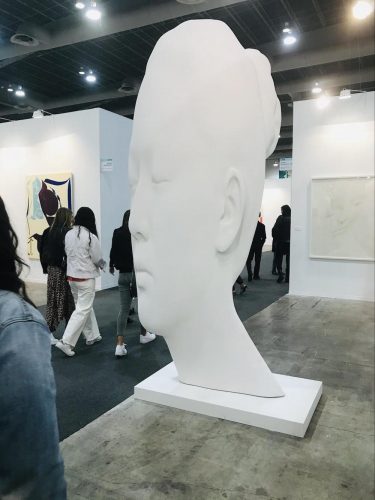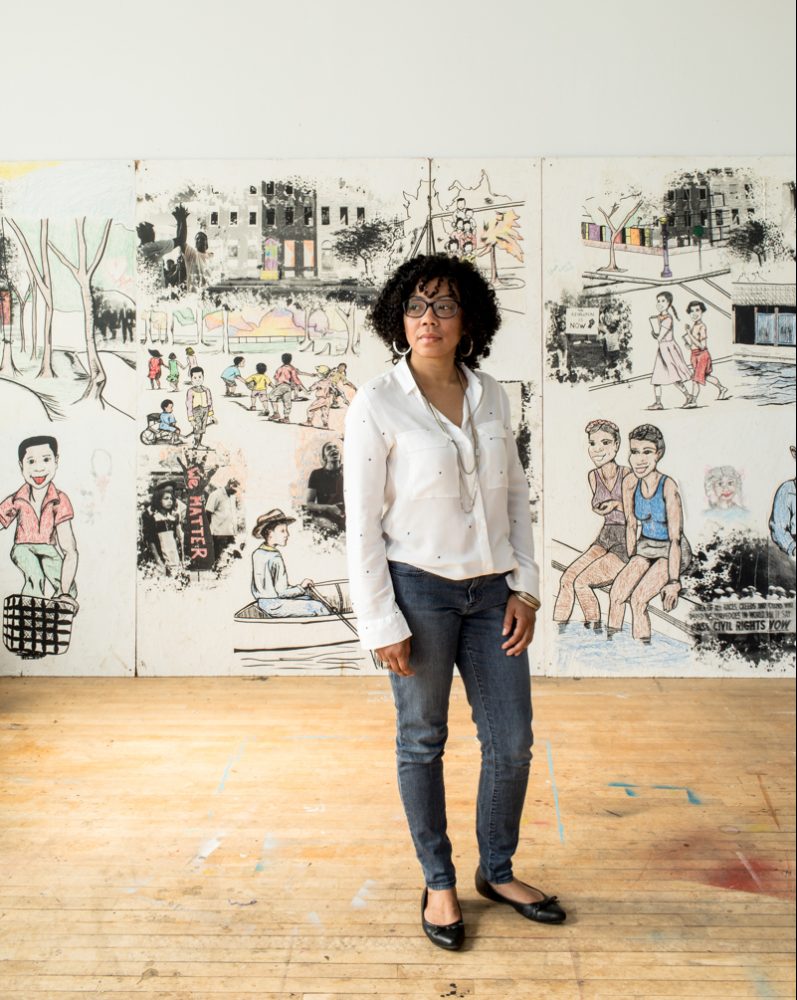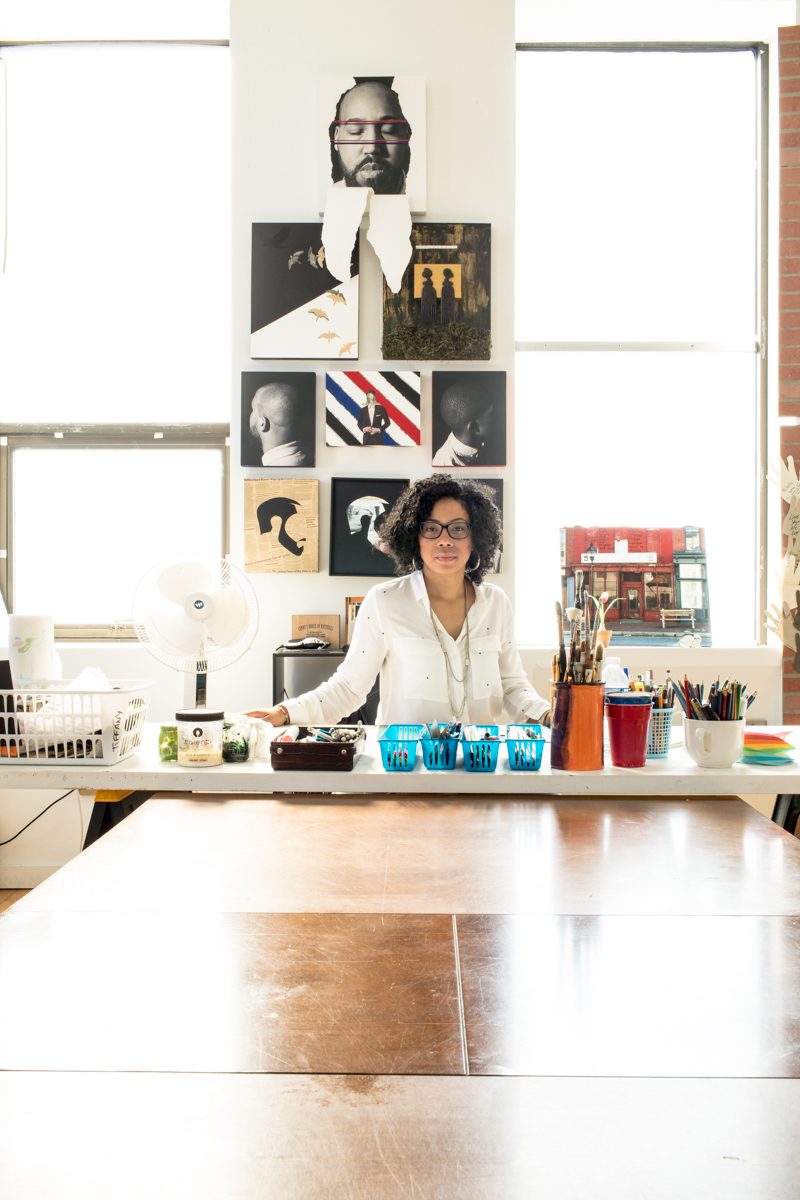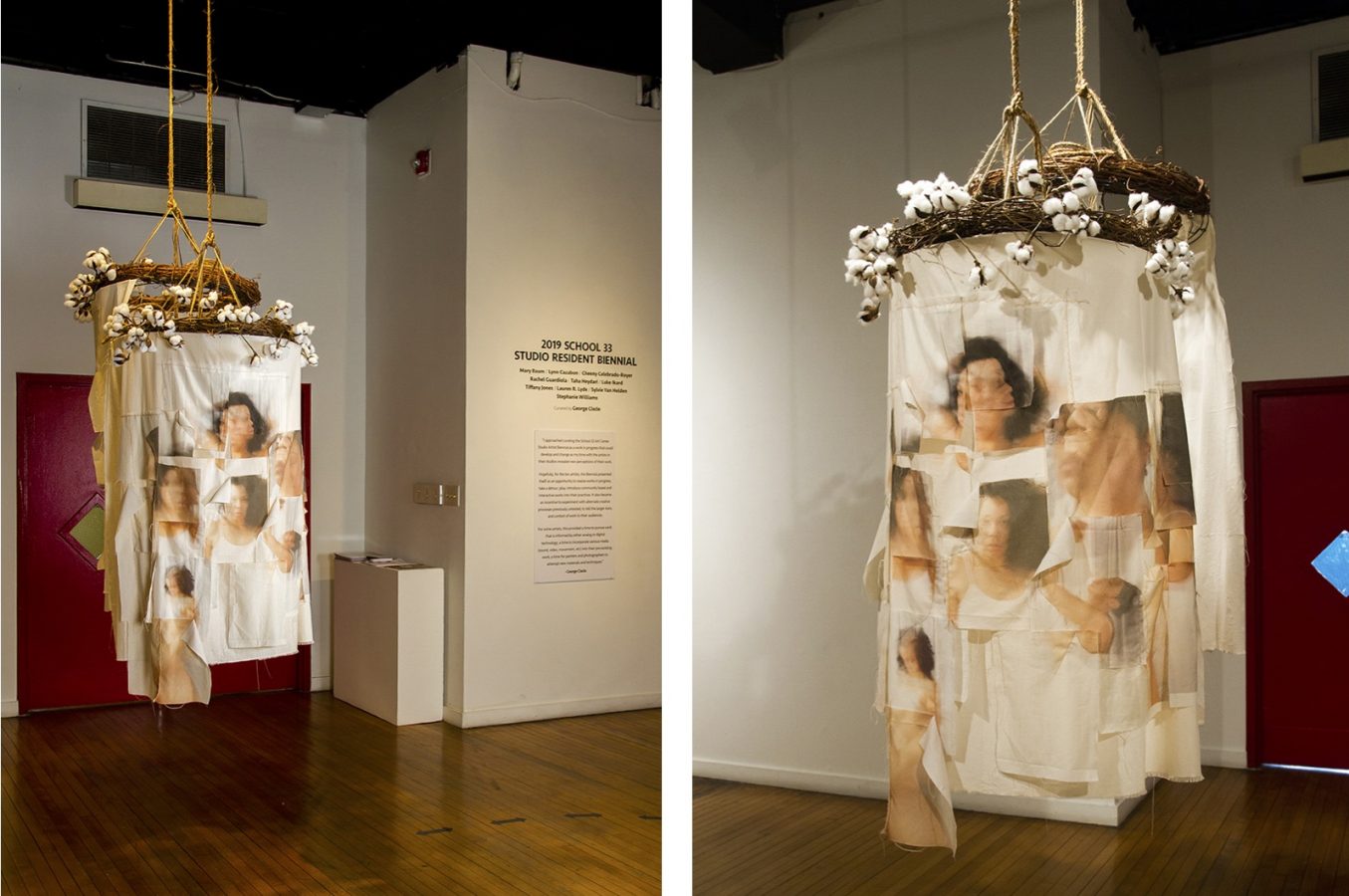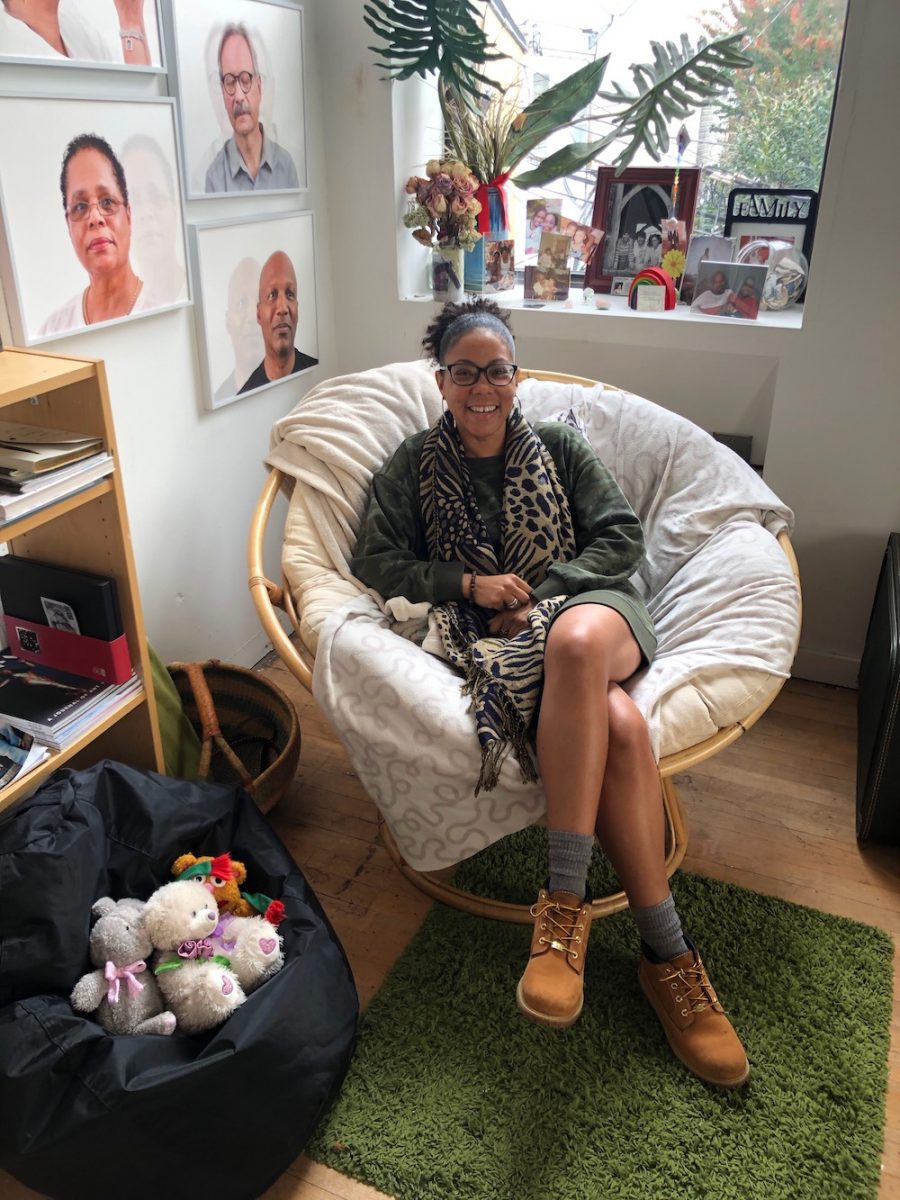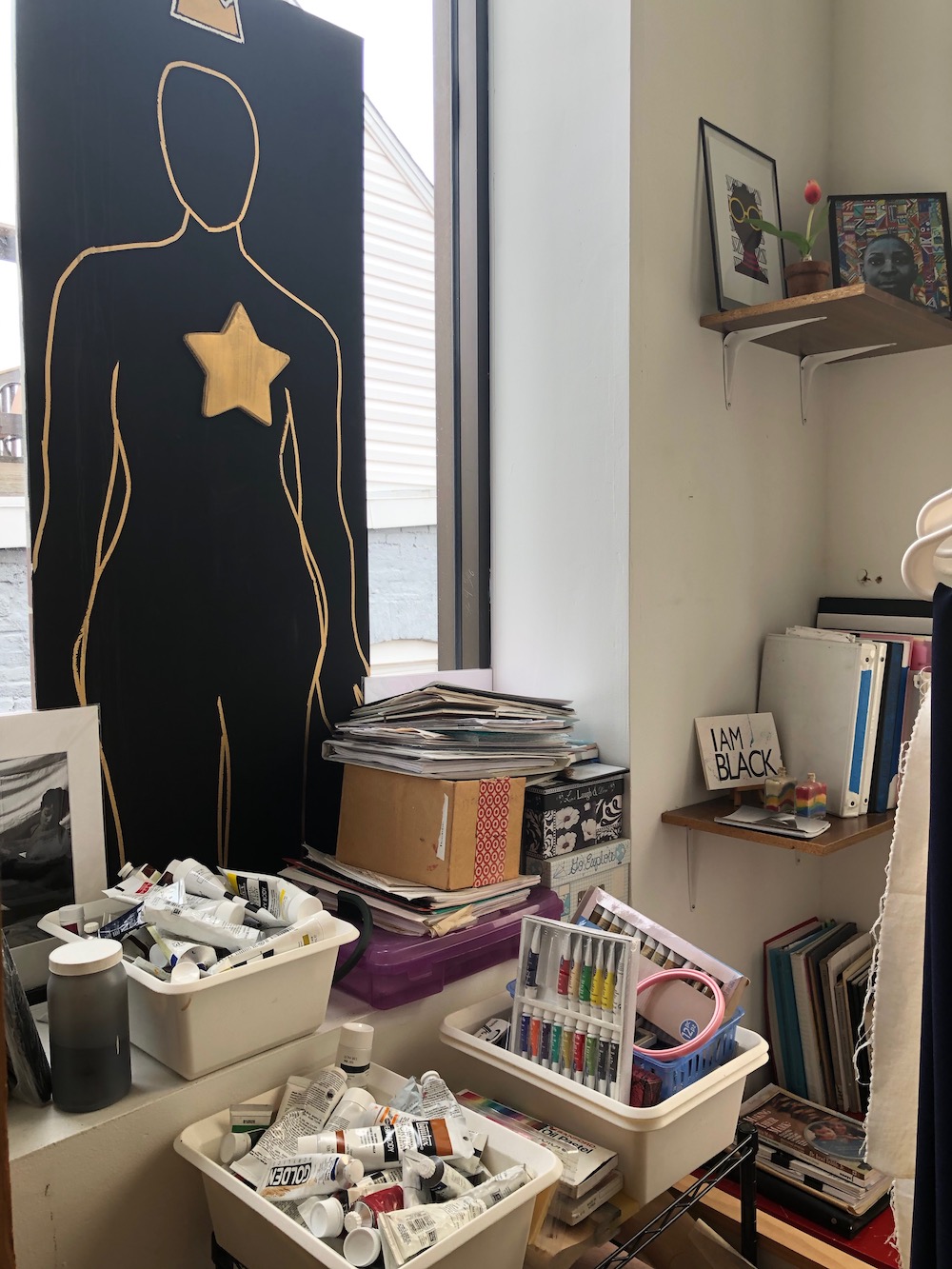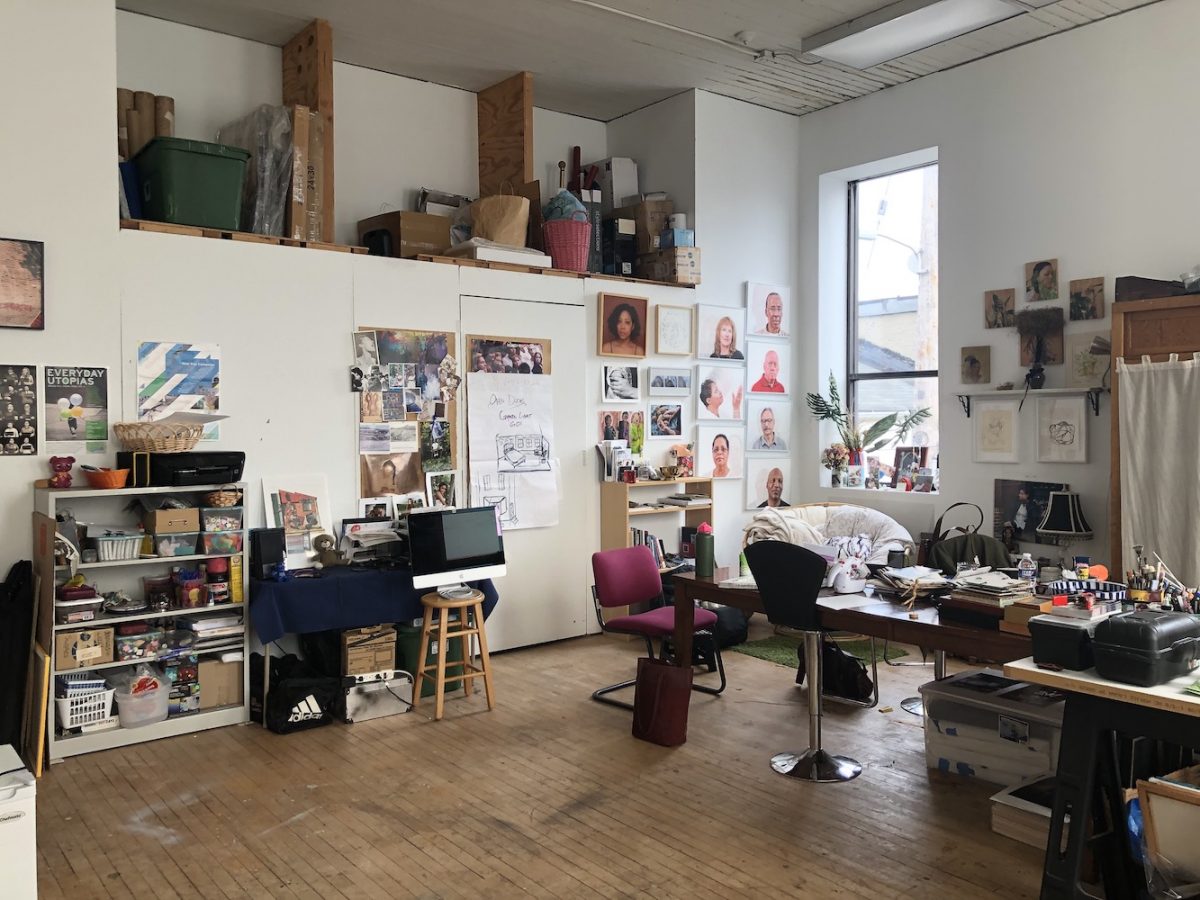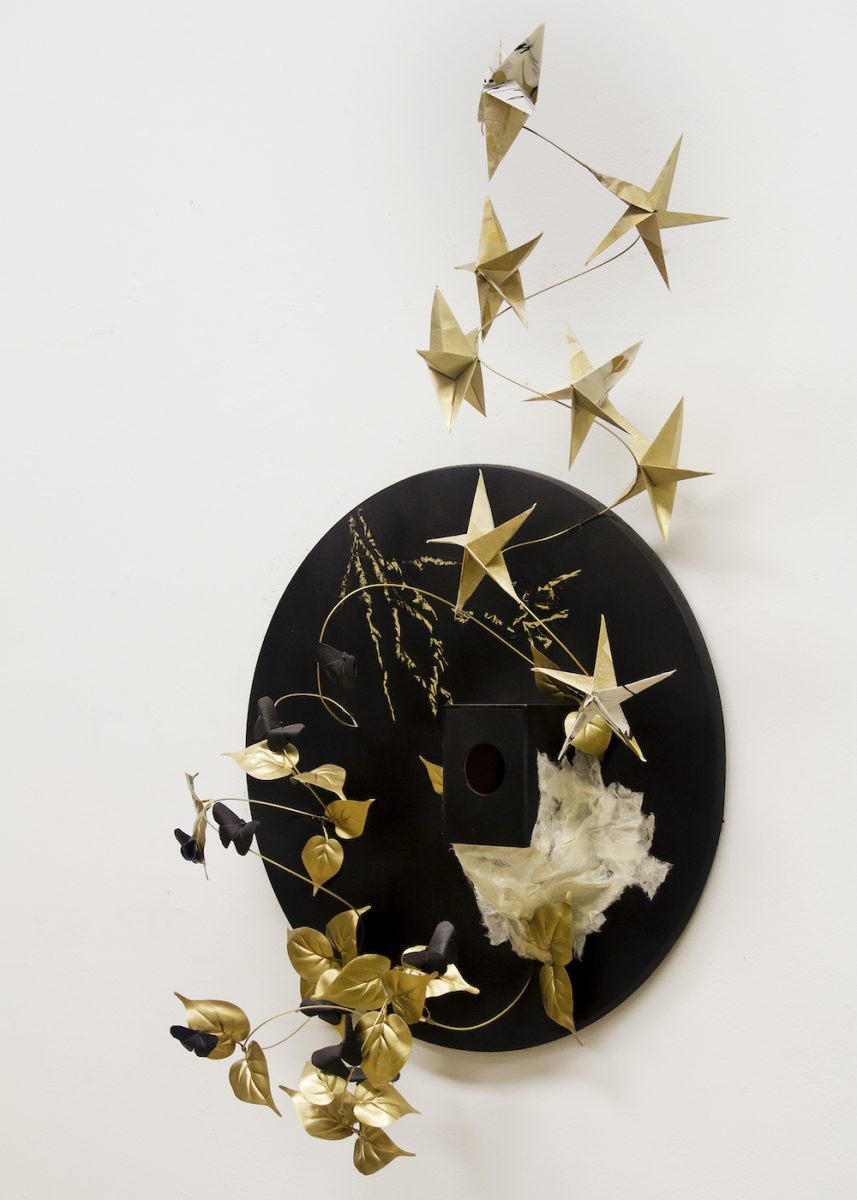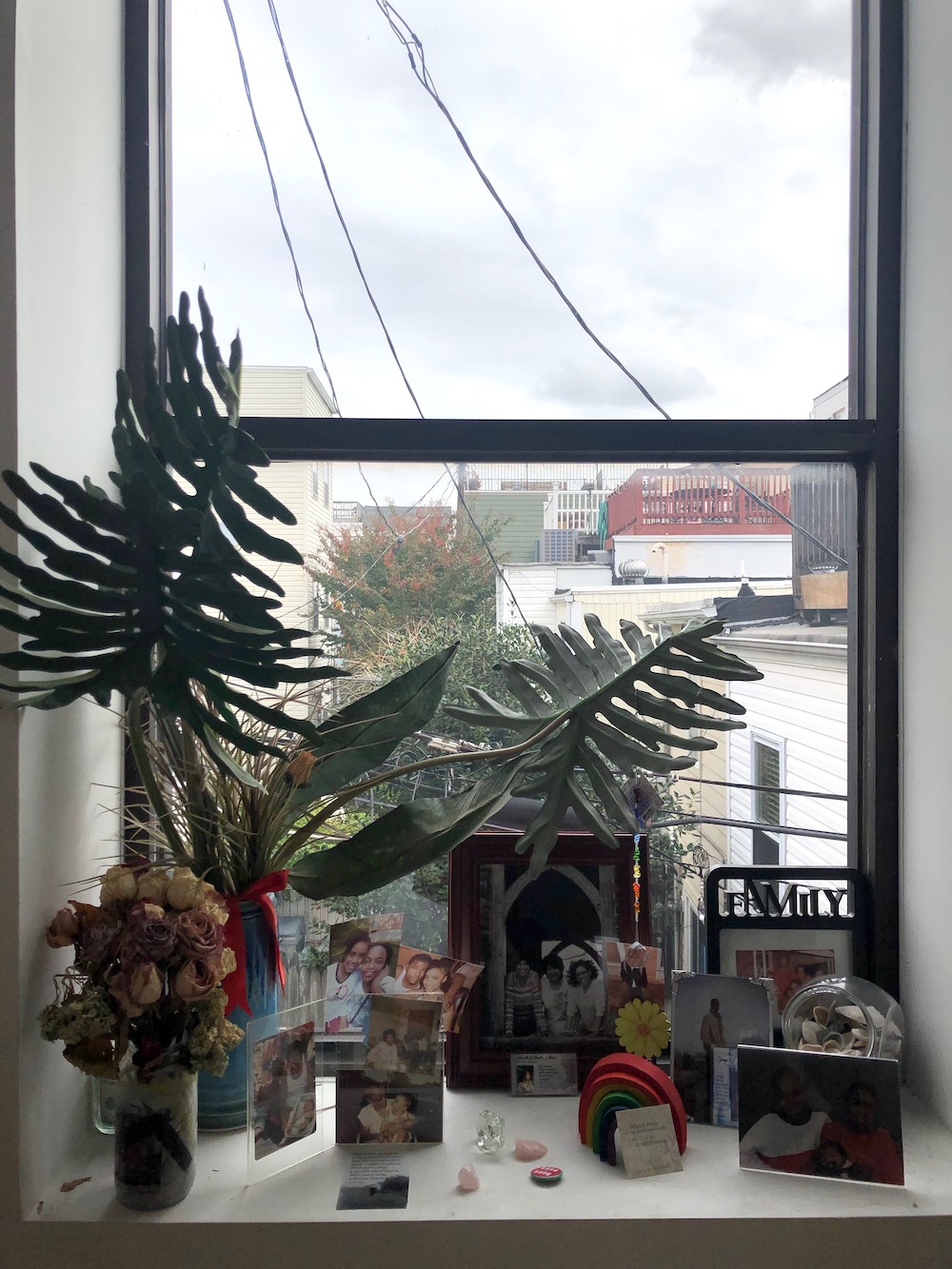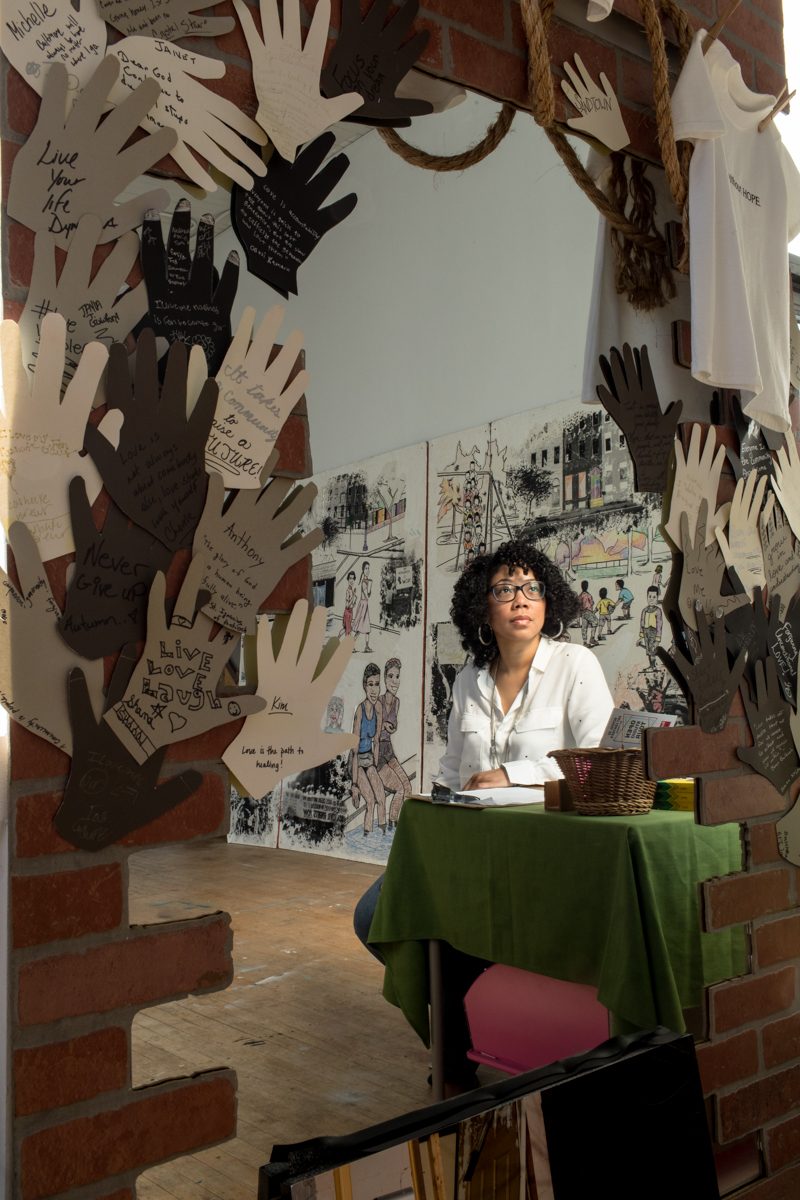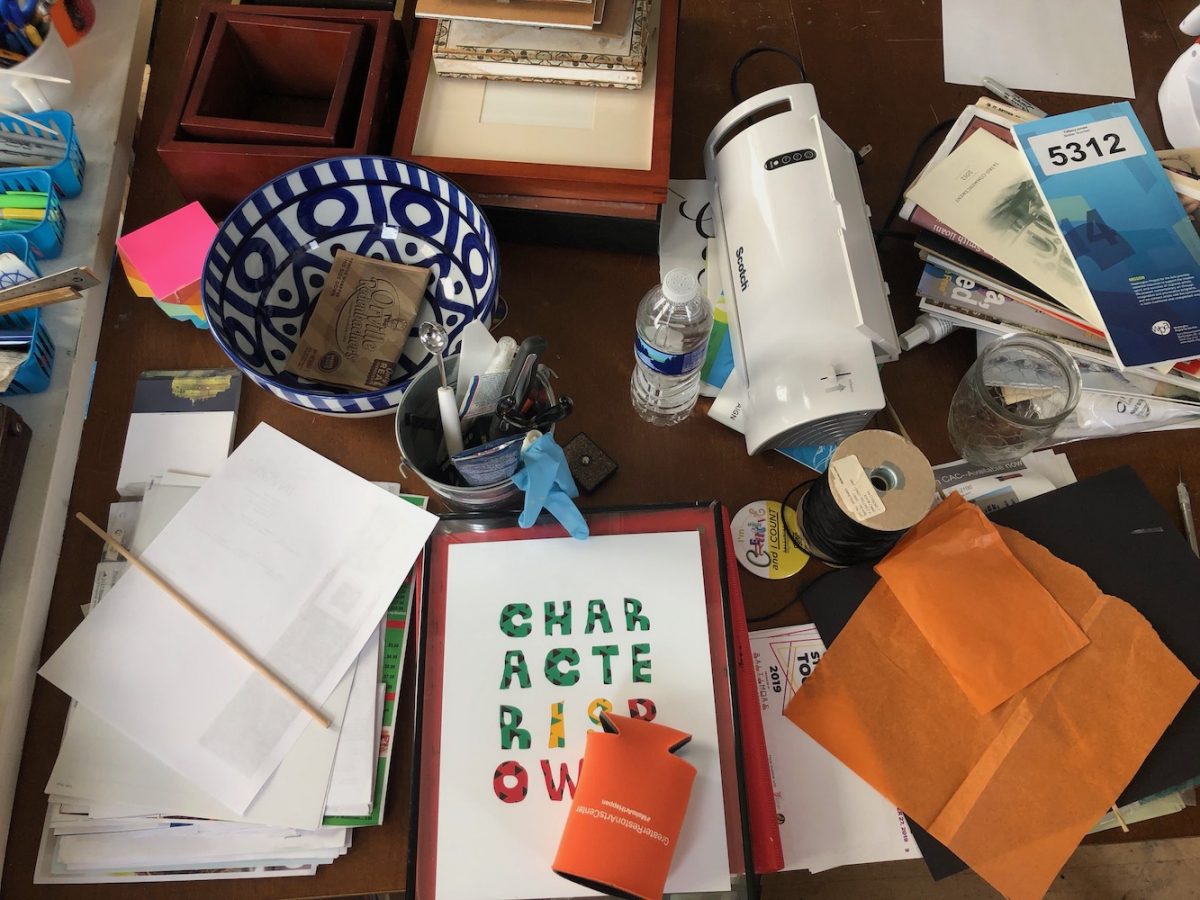What is the art supply/business-related material you should buy stock in, you use it so much?
Google! Oh my gosh, Google keeps me sane and in check, for the most part, LOL!
Is there a show you’ve seen in the last five years that you are still thinking about? Why do you think that is?
I would say it would have to be Autumn Leaves (September 19–November 2, 2014) because it was a significant moment in my life that meant a lot to me personally and is one of my favorite series. While I was creating this work my mother passed, and the process to make the work, the feeling that came out of the work, truly spoke to me as an artist.
The other exhibition would be not really a show, but my work being acquired as part of the permanent collection for the Eaton DC Workshop hotel. The series BLACK is a very special series to me (my thesis work from MICA) and to have the Eaton as a permanent home is exactly where it should be.
What do you make of the creative community in Baltimore?
I love it. I really like that I’ve seen it grow a lot. I think that Baltimore is unique in its art world. I’ve traveled, but I haven’t traveled a lot. So when I go other places, I’m always looking for the arts district and sometimes I don’t see it. In some places I’m like, Oh, this is different. And so it makes me want to come back to Baltimore. I feel like we’re a progressive city in the way that our arts are affecting our communities. Artists are very vocal about our community, our city, and there’s a lot of politics in it. But I know that there’s people trying to do work and trying to make sure artists are supported and that they’re not used to gentrify the city in ways that are not supportive to residents. That’s what I love about Baltimore and our art community. People don’t bite their tongues, they say what they want to say. It’s soul feeding. Sometimes it can be heartbreaking. I feel like the city wouldn’t be what it is without its artists or creative people.
I do feel like we are a model city of what it could look like if people really respected and supported living artists the way they should be. I had this eye-opener moment last year when we brought Stephen Towns into Access Art. The kids were like, “wait a minute, there’s living artists.” They were like, “Oh my gosh, he’s a real living artist, living in Baltimore!” So that has been a mission in our curriculum, where we pick artists of color, we pick female artists for them to learn about so they can understand that these people are alive and exist.
You’ve had a studio here at School 33 for about five years now, what’s it like being part of this creative community?
I’ve met so many artists that have come in and out of the building and I’ve seen so many exhibitions come and go. And it’s always fun to be behind the scenes when people are installing their work, especially when like a big installation, like when David Eassa turned that whole project room into a beach-type thing. And someone built a house in the middle of the gallery once, so that’s always fun. They had the mural show a couple of years ago, so it was neat seeing the muralists come in and paint on the walls. What I like about School 33 is we have our set events throughout the year to come together as a community.

